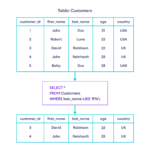To begin with, now cloud services, at least in the West and in developed countries, are no longer a fashionable IT trend, such as, for example, the Internet of Things or artificial intelligence (AI).
The fashionable trend of “clouds” was ten years ago. Now cloud services are our harsh (well or not so) IT reality and an integral part of most business processes. But from these “cloud” technologies, of course, do not become less cool. And a programmer who would like to work in large companies and on serious projects will find it difficult to do without knowledge of the clouds.
Today, many of us use cloud services all the time without even thinking about it – for example, booking hotels online, ordering and paying for food delivery from restaurants, or simply browsing our Facebook news feed. Companies around the world are actively moving to cloud services because it is more convenient and allows you to improve productivity while simplifying many business processes.
What specific advantages does the introduction of cloud services give to companies and why has the business been increasingly “flying into the clouds” for several years now? Let’s briefly go over the main points.
Cost reduction and cost savings
For any business, profitability comes first, and the use of clouds can significantly reduce costs. As a result, all large companies, albeit at different speeds, are moving towards transferring all tasks that can be transferred there to the clouds. Still, you can do without the need to have and maintain a huge physical IT infrastructure, along with the staff of staff to maintain it.
Reliability and high uptime
Today, most major cloud providers manage to maintain the highest uptime of 99.99%. Such reliability, of course, cannot but please the business, because it allows them to ensure almost uninterrupted operation of their resources and applications.
Also read: Adobe GC Invoker Utility | Disable it at Startup?
Availability and fast scalability
Thanks to the clouds, startups and small companies have access to the same level of technical resources that large corporations have. And they can quickly scale their business with minimal infrastructure costs. This has already had and continues to have a huge impact on the market in general, and the IT industry in particular. Increasingly, we see small startups emerging and successfully competing against the giants, overtaking them in innovation and mobility. This happens not least thanks to the spread of available clouds around the world.
Cloud computing empowers you tremendously. Now anyone with internet access and a credit card can launch and manage applications using the resources of modern data centers. Thanks to the clouds, innovation is accelerating and getting cheaper. Cloud application development services are rather popular.
Companies can avoid or minimize IT infrastructure costs
An important benefit of cloud computing is that companies can now transform their capital expenditures into operating expenses and end the never-ending infrastructure costs that a non-cloud solution can incur. All data that continues to form, files, and documents can now be found in the cloud, and not on your company’s servers.
Developers can release their apps faster
In an era where everything is measured by time, cloud computing is a priority. Developers can access their application projects at any time they want, work with them, fix, remove bugs, and test. Work gets done faster. This way, they can work on a large number of projects, rather than worrying about a physical server with limited resources to host applications.
To sum up
As we can see, https://www.dataart.com/services-and-technology/cloud is another area of the IT market for which the future is and where Java is not only used but often is the main language. Without our beloved Java, many companies will find it difficult to imagine the organization of technological processes. And with the rapid transition of businesses and organizations to the cloud, the demand for Java programmers, who not only own this programming language but also know how to use cloud tools and technologies, is increasing. In its work guarantees quality. The cloud gives you the edge to customize and allocate resources to meet seasonal spikes and fluctuations. Apps and files do not need to be installed on user devices because they can be retrieved from the cloud at any time.











